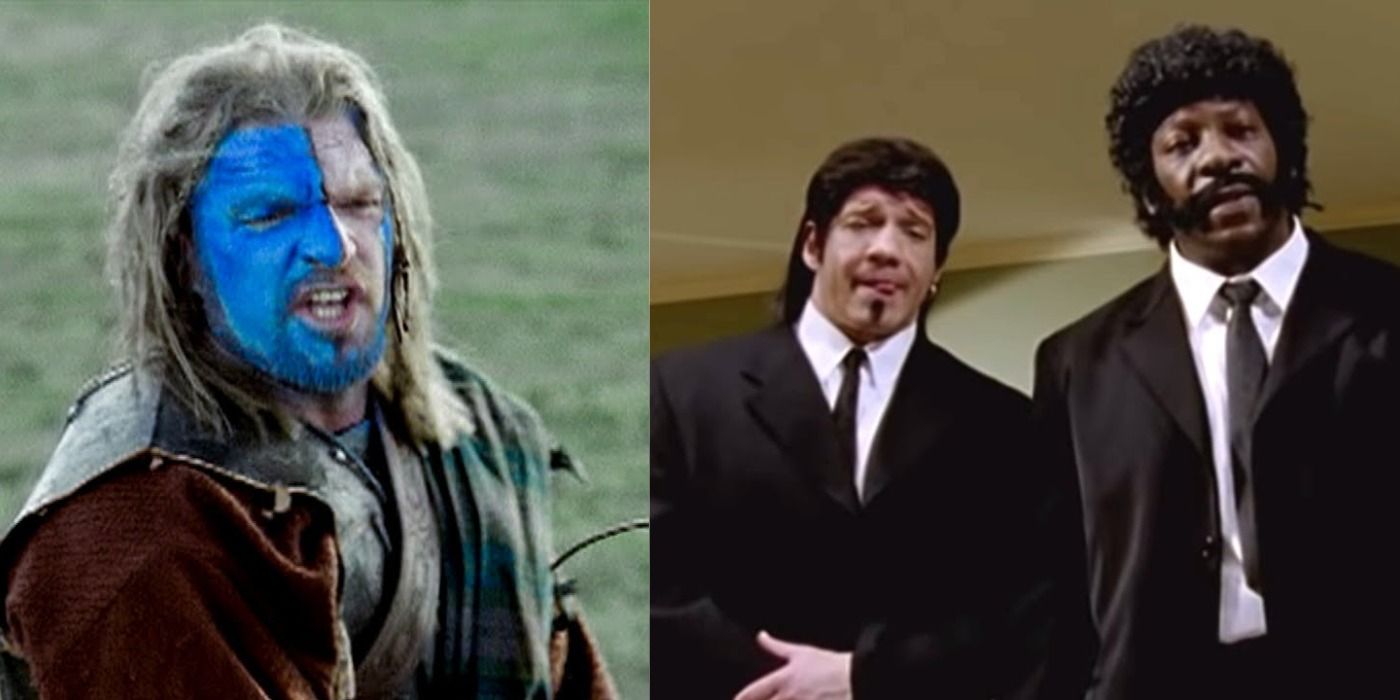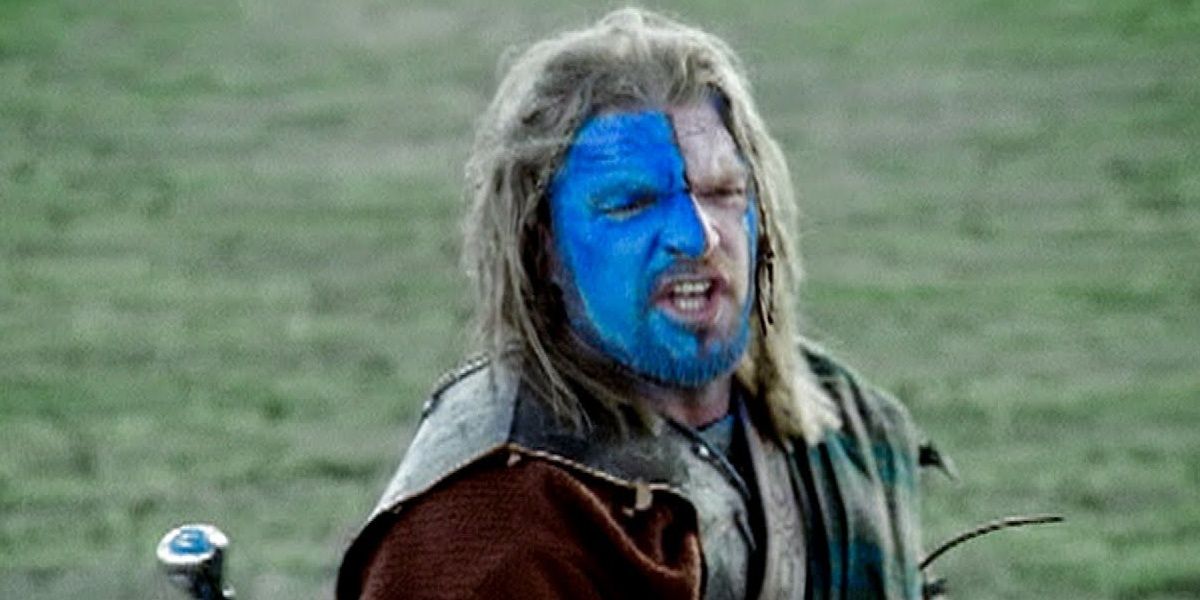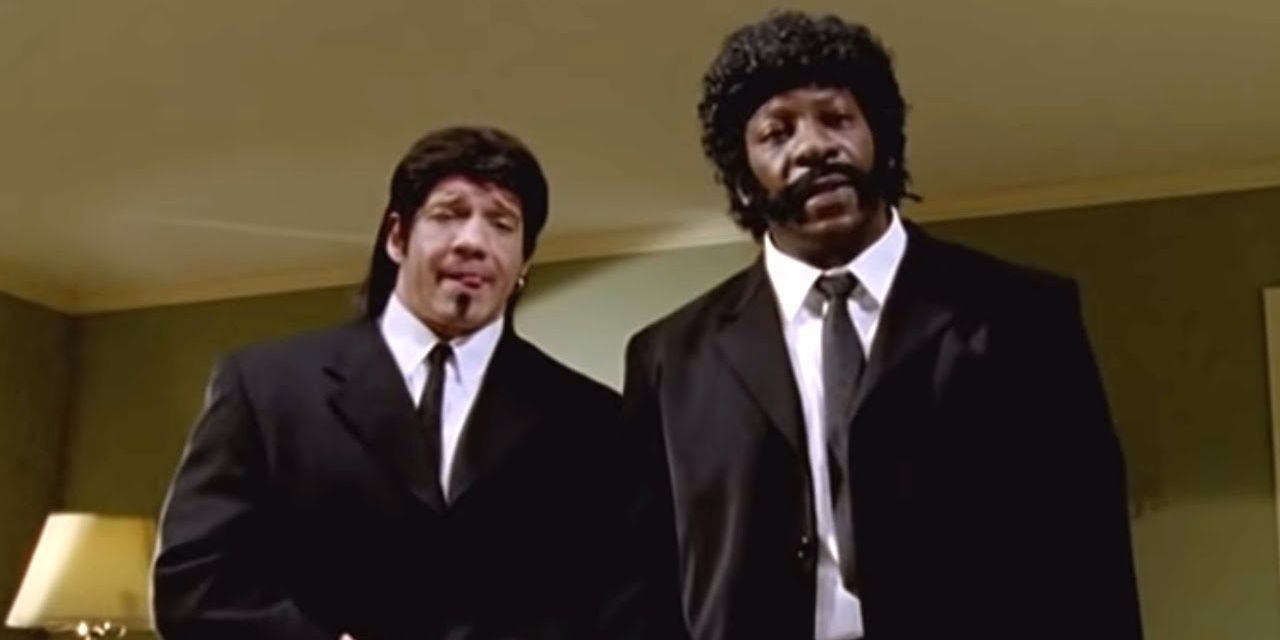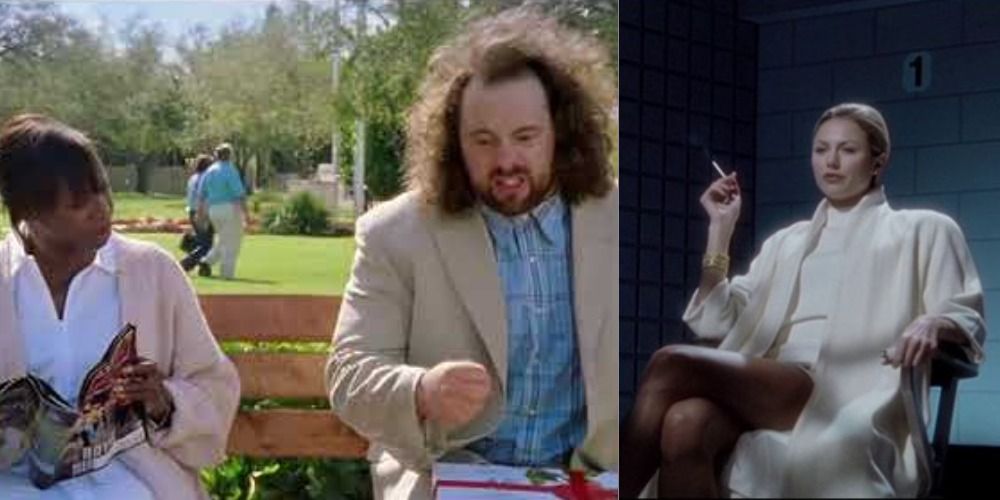One thing WWE has all but undeniably done better than any other wrestling promotion across the years is to create compelling hype videos and advertisements. Most of the videos feature highlights from major feuds, or even individual stars, with a backdrop of heart-pounding music synced up to the action to sell the drama. WWE took a slightly different tack in 2005, though, with an advertising campaign for WrestleMania 21 that saw WWE Superstars parodying famous movie scenes, complete with costuming and carefully designed sets. It may have been WWE marketing at its very best.
The WrestleMania 21 Ads Made The Connection To Los Angeles
WWE typically advertises on the basis of its own product and brand recognition—selling its Superstars and their storylines. The location an event emanates from can factor into that presentation, but it’s usually more of an afterthought than a focal point.
In 2005, though, WWE was bringing WrestleMania back to Los Angeles. The company had taken a break from major stadiums with a return to Madison Square Garden for WrestleMania 20, and as discussed by a series of talking heads alluded to in WWE’s The True Story of WrestleMania documentary, the then-Staples Center in Los Angeles felt like the West Coast equivalent. The event marketing leaned into LA, and particularly the glitz and glamour of Hollywood with its series of movie parodies that added a sense of big-time, movie business-related pizazz going into the show.
The WrestleMania 21 Ads Were Legitimately Entertaining
WWE’s attempts at venturing outside the confines of professional wrestling programming have had uneven results over the years. That includes the middling performance of most WWE Studios projects or any number of musically oriented gimmicks that have failed to cross over beyond the realm of sports entertainment. However, when it came to the WrestleMania 21 advertisements, the product was legitimately entertaining in its own right.
Triple H was well cast in Braveheart garb, delivering a motivational speech with Ric Flair to woo him on. Stone Cold Steve Austin entertained, playing in a riff off Gladiator. Stacy Keibler’s take on Basic Instinct was provocative, and JBL was a perfect fit to parrot Jack Nicholson in A Few Good Men opposite John Cena in the Tom Cruise role. Eugene as Forrest Gump was all but a gimme. The combined effect of these ads was for them to become effective marketing tools for being fun to talk about and watch more than once, in turn ensuring that even casual fans who saw them remembered that WrestleMania was around the corner.
The WrestleMania 21 Ads Were Campy
One of the biggest reasons for the success of the WrestleMania 21 movie-inspired ad campaign may well have been how campy they were. There are times when WWE’s marketing for WrestleMania in particular feels as though it takes itself too seriously. Despite WrestleMania 17 being widely regarded as one of the best WrestleManias of all time, fans can’t help but chuckle at WWE trying to sell the event as “a celebration of life” in a completely un-ironic, sentimental depiction of fans watching the event around the world.
For WrestleMania 21, WWE seemed to recognize what it was for its casual fans—a bit of a guilty pleasure, and something a majority of fans don’t want to take too seriously. So it was that choices like Booker T and Eddie Guerrero in the parts of Samuel L. Jackson and John Travolta,respectively, from Pulp Fiction were pure fun for the novelty of observing these fish out of water and getting a laugh out of what they came up with.
It's an ongoing topic of debate how much WWE should cater to casual or lapsed fans, and particularly so at WrestleMania. After all, hardcore fans want their devotion rewarded for following the company all year long. Meanwhile, it only makes sense for WWE to want to rope in its fringe audience given the more committed segment of their viewership is likely to tune in no matter what. Regardless of one’s point of view on this issue, the WrestleMania 21 ad campaign was a great place to go more casual viewers. The marketing emphasized the location of that year’s event, entertained fans, and didn’t take itself too seriously. Perhaps most importantly, the accessible format invited back fans. WrestleMania 21 was chock-full of major matches, and was a historically important show that marked major pushes for the next generation of top stars. John Cena and Batista won their first world titles, Randy Orton held his own in a rebooted heel run against The Undertaker, and Edge won the very first Money in the Bank Ladder Match. The movie-themed ads ensured some extra eyes were on the product for this next chapter.




